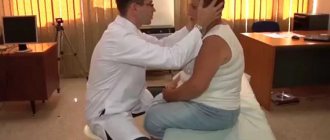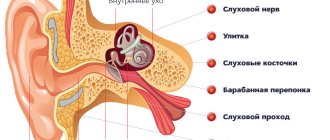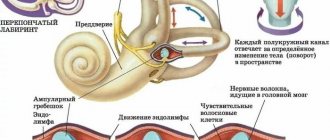For some people, especially older people, their blood pressure drops too low when they sit or stand (a condition called orthostatic or postural hypotension). Symptoms of weakness, dizziness, lightheadedness, confusion, or blurred vision develop within a short time - from a few seconds to a few minutes after standing up (especially after lying in bed or sitting for a long time) and quickly disappear when the person lies down. However, some people may fall, faint, or, very rarely, have short-term seizures. Symptoms develop more often and are more severe after exercise, drinking alcohol and/or eating a large meal, or when there is a lack of fluids (dehydration).
Some young people develop similar symptoms when standing up, but do not experience a drop in blood pressure. Often, when standing up, their heart rate rises above normal (tachycardia develops), a disease called postural orthostatic tachycardia syndrome (POTS). The cause of dizziness in such people, given normal blood pressure, is not yet clear.
Causes of dizziness
Dizziness or lightheadedness when standing up occurs as a result of dysregulation of blood pressure. Typically, when standing up, gravity causes blood to pool in the veins of the legs and torso. This causes a decrease in blood pressure and the volume of blood flowing from the heart to the brain. Low blood flow to the brain causes dizziness and other symptoms. To compensate, the nervous system quickly increases the heart rate and constricts blood vessels, which quickly returns blood pressure to normal before symptoms begin to develop. A part of the nervous system called the autonomic nervous system is responsible for this compensation.
Problems with blood pressure regulation, which can lead to dizziness when standing up, can be caused by many medical conditions. Among them:
- Impaired function of the autonomic nervous system due to diseases or medications;
- Decreased ability of the heart to pump blood;
- Decreased blood volume (hypovolemia);
- Hormonal disorders.
Causes vary depending on whether symptoms are new to developing or have already been present for some time.
Common causes of dizziness
The most common causes of new-onset dizziness when standing up include:
- Decreased blood volume (eg, due to dehydration or blood loss)
- Medications;
- Prolonged bed rest;
- Decreased adrenal function (adrenal insufficiency).
The most common causes of dizziness when standing up that have been present for a long time (chronic) include
- Age-related changes in blood pressure regulation;
- Medications;
- Dysfunction of the autonomic nervous system.
Causes of fainting
A general feeling of weakness is a very common symptom of autonomic nervous disorder. The feeling of weakness can be chronic (chronic fatigue syndrome) or appear suddenly during everyday physical and psycho-emotional stress. A person suddenly experiences instability, dizziness, nausea and other symptoms of an autonomic disorder, depending on the degree of its neglect. This happens because the autonomic nervous system experiences difficulties in functioning and has difficulty adapting the body to the slightest load.
Evaluation of patients with dizziness
People who feel dizzy or lightheaded when standing up often recover quickly by sitting down and then slowly standing up again. However, it is usually important to determine the cause of such dizziness. The following information can help patients decide whether to see a doctor and know what to expect during a doctor's evaluation.
Warning signs in patients with dizziness
Some symptoms and signs in patients who feel dizzy or lightheaded when standing up should be cause for concern. These include:
- Blood in the stool or black, tarry stool;
- Neurological symptoms, such as difficulty walking and/or loss of coordination or balance.
When to see a doctor
If alarming signs appear, or if you fall or lose consciousness, you should immediately consult a doctor. If you develop frequent or persistent episodes of dizziness when standing up, you should consult a doctor at the first opportunity. Usually a week's delay will do no harm. If you experience occasional episodes of dizziness when standing up, you should call your doctor. The doctor will decide whether the patient needs to be seen urgently, depending on other symptoms and medical history.
What does a doctor do
First, the doctor will ask questions about the patient's symptoms and medical history. They then perform a physical examination. Based on the results of a history and medical examination, it is often possible to suggest the cause of dizziness and plan the necessary examinations in each specific case.
Doctors ask:
- How long ago did dizziness appear?
- Have you ever fallen or lost consciousness during an episode of dizziness?
- Whether the patient has had conditions known to cause dizziness (such as bed rest or fluid loss);
- Does the patient have a medical condition (such as diabetes, Parkinson's disease, or cancer) that may cause dizziness?
- Whether the patient is taking medications (eg, antihypertensives) that may cause dizziness.
The doctor will then conduct an examination. The doctor will measure blood pressure and heart rate after the patient has rested in a supine position for 5 minutes. He will then measure blood pressure and heart rate again 1 minute and 3 minutes after the patient has assumed an upright position. The doctor may perform a digital examination of the rectum to look for possible gastrointestinal bleeding. An important part of the examination is a neurological examination to check strength, sensation, reflexes, balance and gait.
The most common causes of sudden dizziness—drugs, bed rest, and decreased blood volume—are usually easy to identify. In patients with long-term symptoms, examination findings such as movement problems may indicate Parkinson's disease. Numbness, tingling, or weakness may indicate a nervous system disorder.
Carrying out tests for dizziness
If the cause is not obvious (eg bed rest), testing is usually required. Your doctor will usually order an electrocardiogram (EKG), a complete blood count, and other blood tests (such as measuring electrolytes). Other tests are ordered based on the results, especially if the patient's symptoms suggest heart or nerve problems.
If doctors suspect that a drug is causing dizziness, they may suggest that the patient stop taking it and watch to see if the dizziness goes away, thereby confirming or denying the cause.
If doctors suspect disorders of the autonomic nervous system, an examination using an orthostatic stand may be prescribed. The patient lies flat on a special mechanized table for several minutes. The table is then tilted upward at an angle of 60°-80° degrees for 15-20 minutes, while blood pressure and heart rate are continuously monitored. If blood pressure does not decrease, the person is given intravenous isoproterenol (a drug that stimulates the heart) in a dose sufficient to speed up the heart rate by 20 beats per minute, and the test is repeated. This procedure takes from 30 to 60 minutes and is absolutely safe.
Types of presyncope
There are several types of fainting and pre-syncope, depending on the mechanism of their development:
- Vaso-vagal syncope (vascular), occurs due to a sharp decrease in vascular tone. A weak but frequent pulse is characteristic. Most often, a prefainting state develops with VSD and is accompanied by constantly low blood pressure (90/60) and anemia. Usually found in people of asthenic physique, children and adolescents during a period of rapid growth.
- Vagal syncope. The vagus nerve causes a sudden decrease in heart rate, which reduces the amount of blood flowing to the brain. The pulse does not weaken, but slows down. It is more common in people who have a heavy build or are overweight.
- Emotional fainting can develop in any person due to an acute emotional experience or sudden fear.
- Cardiogenic fainting (cardiac) is provoked by diseases of the cardiovascular system and is considered the most dangerous (in terms of the causes that cause them).
- Orthostatic fainting. Sharp darkening of the eyes and loss of coordination when changing position (most often, a sharp rise from a lying or sitting position).
- Fainting during pregnancy. There are three main causes of presyncope during pregnancy:
- Often during gestation, women develop anemia, i.e. there is a sharp lack of hemoglobin and brain tissue does not receive the required amount of oxygen;
- with low blood pressure, the blood “does not rise” to the pregnant woman’s head; in a horizontal position, the symptoms of a pre-fainting state disappear;
- There are rare cases when the volume of the mother's circulating blood is not enough for her and the fetus together.
In addition to those listed, there are many more types of fainting: hypoglycemic, provoked by a tight collar or shortness of breath, as a manifestation of subclavian steal syndrome, and others.
Treatment of dizziness
If possible, treat any causes, including changing the dose or stopping any medications that are causing the symptom. However, many causes cannot be cured, so steps are taken to relieve symptoms. Measures include lifestyle changes and medications.
Patients who require prolonged bed rest should sit up and exercise in bed every day if possible. Rising from a lying or sitting position should be done slowly and carefully. In general, you should drink enough fluids, limit or avoid alcohol, and exercise regularly if possible. Regular moderate-intensity exercise increases muscle tone in the walls of blood vessels, which reduces the amount of blood pooling in the legs. Symptoms may be relieved by sleeping on a bed with the head of the bed raised. In some patients, increasing salt intake may increase water retention and reduce symptoms. Doctors may recommend increasing your salt intake by adding more salt to your food or taking sodium chloride tablets. However, increasing salt intake may not be recommended for people with heart disease.
Your doctor may prescribe fludrocortisone, a drug that helps your body retain salt and water, thereby preventing your blood pressure from falling when you stand up. However, this drug may cause increased blood pressure when lying down, heart failure, and low potassium levels in the blood. Sometimes doctors prescribe fludrocortisone in combination with propranolol or another beta blocker. Midodrine is a drug that causes constriction of both arteries and veins, helping to prevent blood from pooling in the veins of the legs. Side effects include tingling or numbness and itching. This drug is not recommended for patients with coronary or peripheral artery disease.
In some cases, other medications such as nonsteroidal anti-inflammatory drugs (NSAIDs), droxidopa, pyridostigmine, and octreotide may help.
The main thing that older people need to know
Dizziness or lightheadedness when standing up occurs in approximately 20% of older adults. It occurs more often in people with underlying health conditions, especially high blood pressure, and in residents of long-term care facilities. Many falls occur due to dizziness when standing up. Elderly people should avoid standing for long periods of time.
The increase in incidence in older people is associated with decreased responsiveness of the receptors that control blood pressure, combined with increased stiffness of the arterial wall, leading to difficulty moving more blood volume and increased blood pressure. Decreased receptor sensitivity leads to a delay in the normal reaction of the heart and blood vessels in response to the transition to an upright position. Paradoxically, high blood pressure, which is more common in older people, can contribute to decreased sensitivity of the receptors, increasing the likelihood of developing dizziness when standing up.
Key points about feeling dizzy or faint
- Dizziness or lightheadedness when standing up is usually due to decreased fluid volume in the body or dysfunction of the autonomic nervous system.
- With age, dysfunction of the autonomic nervous system to varying degrees often develops, but doctors examine all patients to rule out disorders of the nervous system.
- For a general examination of autonomic function, an orthostatic stand is used.
- Treatment includes physical measures to reduce the amount of blood pooling in the veins, regular exercise, increased salt intake, and sometimes fludrocortisone or midodrine.
Authors of the article: Andrea D. Thompson , MD, PhD, Department of Internal Medicine, Division of Cardiovascular Medicine, University of Michigan; Michael J. Shea , MD, Michigan Medicine at the University of Michigan
Presyncope: Cases from practice
Female, 22 years old, HR manager.
In 2011, a young girl contacted us. During minor psycho-emotional stress, she often experienced faintness, general weakness, and drowsiness. There was a feeling that she was “about to faint,” but she never completely lost consciousness.
With little physical activity (rising to her feet, turning her body), instability and dizziness, and a feeling of loss of consciousness also occurred. I felt like “the blood was leaving my head to my feet.” I was looking for something for support. I was forced to control my every movement while walking.
The patient also complained of an unreasonable increase in heart rate and sleep disturbance: from time to time she could not fall asleep for a long time at night for no apparent reason.
At first, the patient associated the symptoms of the disease with a drop in blood pressure, but it, as a rule, turned out to be normal or even elevated. The condition of the blood vessels was also normal.
It is obvious that the autonomic nervous system, being in a “shaken” state, did not adapt the processes occurring in the body to minimal physical activity and, even more so, to more complex psycho-emotional stressful situations. The autonomic department of the nervous system did not rebuild the blood vessels instantly and worked at a slow pace. Therefore, such a pathological condition arose.
After one course of treatment, the girl felt much better and did not need repeated treatment.
Woman, 42 years old, translator.
The patient has a history of episodes of dizziness, nausea, and lightheadedness since adolescence. Rare fainting occurred during school, and after a long break, it recurred at the age of 22 and 23 due to stressful situations.
The woman contacted us in 2011. Since 2008, she began to complain of general poor health due to psycho-emotional stress. She experienced a feeling of unsteadiness when walking, dizziness and heaviness in her head.
A few months later, the condition began to gradually worsen: noise in the ears appeared, at times vision decreased: a “veil” appeared before the eyes, a feeling of loss of consciousness arose, waves of heat or cold rolled in. Approximately once a month, the condition worsened sharply: the feeling of nausea reached the point of vomiting.
The woman drew attention to the dependence of her condition on changes in weather factors (meteodependence), as well as on being in a stuffy room.
At the Center for Autonomic Neurology, the patient underwent two full courses of treatment. After the first course, I noted a 70% improvement in my condition. Carrying out a repeat course eliminated all remaining complaints.











